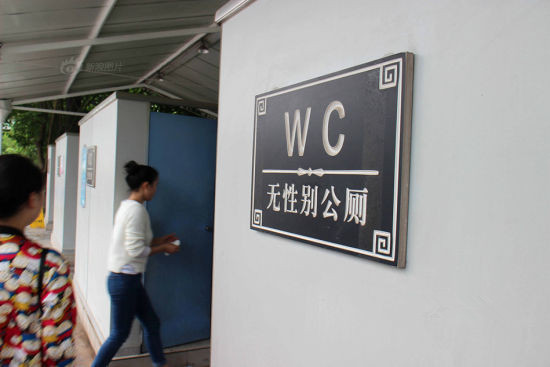Elegant toilet culture to boost tourism
Updated: 2016-05-20 07:36
By Jack Sim & Sun Xi(China Daily)
|
||||||||
 |
|
A woman walks into a unisex public restroom in Chongqing on April 15, 2015.[Photo/CFP] |
Thursday is China's sixth National Tourism Day. China's domestic tourism market has been booming in last decade, with a 10 percent annual growth on average and spending is expected to reach around $890 billion by 2020.
However, the bottleneck in China's domestic tourism market is now none other than its "inadequate, dirty and chaotic" toilets. As Li Jinzao, head of the China National Tourism Administration, has pointed out, a dirty toilet destroys the efforts of all kinds of tourist resort promotions and their negative impact is hard to erase.
That was why, the CNTA launched a nationwide three year "Tourism Toilet Revolution" in January 2015, with the goal of building and reconstructing 57,000 public toilets by the end of 2017. Only last year, more than 20,000 new toilets were built.
Actually, Beijing's 2008 Olympic Games was the beginning of China's toilet revolution. In an effort to ensure their success, the Chinese government invested billions of yuan in building 4,000 new public toilet facilities to world-class standards. To showcase the great progress that was made, Beijing hosted the World Toilet Summit in 2004, with the help of the World Toilet Organization.
There is no doubt the Chinese government has the capability to deliver any ambitious infrastructure commitment quickly. But it is the software that is critical to the success of the toilet revolution. China's toilets are generally "unevenly scattered, poorly managed and low in quality".
That could be remedied by following the "ABC" rule, namely architecture, behavior and cleaning.
- 'Toilet culture' on display at theme park
- 'Toilet revolution' must flush away bad memories
- Foundation's free toilet paper scheme flushed with success
- Companies accused of price-fixing in toilet-paper market
- China's tourism head looks to shorten toilet waiting lines
- Toilet revolution for tourism evolution
- Toilet humor no joke for technically challenged
- Global health entering new era: WHO chief
- Brazil's planning minister steps aside after recordings revelation
- Vietnam, US adopt joint statement on advancing comprehensive partnership
- European border closures 'inhumane': UN refugee agency
- Japan's foreign minister calls A-bombings extremely regrettable
- Fukushima impact unprecedented for oceans: US expert

 Stars of Lijiang River: Elderly brothers with white beards
Stars of Lijiang River: Elderly brothers with white beards
 Wealthy Chinese children paying money to learn British manners
Wealthy Chinese children paying money to learn British manners
 Military-style wedding: Fighter jets, grooms in dashing uniforms
Military-style wedding: Fighter jets, grooms in dashing uniforms
 Striking photos around the world: May 16 - May 22
Striking photos around the world: May 16 - May 22
 Robots help elderly in nursing home in east China
Robots help elderly in nursing home in east China
 Hanging in the air: Chongqing holds rescue drill
Hanging in the air: Chongqing holds rescue drill
 2.1-ton tofu finishes in two hours in central China
2.1-ton tofu finishes in two hours in central China
 Six things you may not know about Grain Buds
Six things you may not know about Grain Buds
Most Viewed
Editor's Picks

|

|

|

|

|

|
Today's Top News
Liang avoids jail in shooting death
China's finance minister addresses ratings downgrade
Duke alumni visit Chinese Embassy
Marriott unlikely to top Anbang offer for Starwood: Observers
Chinese biopharma debuts on Nasdaq
What ends Jeb Bush's White House hopes
Investigation for Nicolas's campaign
Will US-ASEAN meeting be good for region?
US Weekly

|

|








